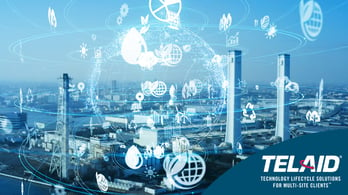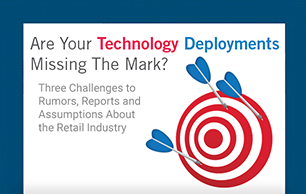This week, our blog features guest contributor, Annie Bevan, Global Head of Sustainability at Superior Essex Communications. In her role, Annie oversees the Superior Essex market leading sustainability program, working to collaborate and accelerate the company’s sustainability platform through engagement with both customers and suppliers.
__
 In light of extreme weather anomalies, the explosion of green investment dollars, and growing pressure from consumers, investors and government agencies alike, companies from retail to tech and everything in-between are taking action to pursue greater sustainability.
In light of extreme weather anomalies, the explosion of green investment dollars, and growing pressure from consumers, investors and government agencies alike, companies from retail to tech and everything in-between are taking action to pursue greater sustainability.
At Superior Essex Communications, we offer sustainable cabling products to help customers achieve their sustainability goals. However, we’re also on a mission to reduce our own company’s impact. While pursuing these parallel sustainability initiatives, we’ve learned a lot about the journey and the power of technology to facilitate sustainable operations. As you map out your own path, consider these five ways that technology can help you accomplish your sustainability goals.
- Support human health and wellness – Now, more than ever, we are awakening to the impacts that our surroundings and indoor spaces can have on human health. According to the CDC, up to 90% of human health ailments can be attributed to daily exposure. There is a growing interest in selecting products that support human health and wellness and reduce exposure to potentially harmful chemicals. Superior Essex Communications cabling, for example, has worked to eliminate chemicals identified as harmful by the International Living Future Institute’s Red List (among other programs). Additionally, technologies like Power-over-Ethernet systems through sustainable communication cable that provide power and data to VOC and other environmental sensors as well as lighting that focuses on Circadian Rhythm, can enable spaces focused on occupant health and wellbeing.
- Reduce Scope 3 emissions - Scope 1 and 2 emissions include those generated directly through the operation and energy use of an organization. Scope 3 emissions however, are those generated from resources that are not directly owned or controlled by the company. Scope 3 emissions include all indirect emissions generated by purchased products based on how they are made, packaged, distributed and used. As a result, companies can trim their own carbon footprint by choosing technology products from companies that reduce their scope 1 and 2 carbon impacts as well as from products that also offer Carbon Offsets to offset their carbon impacts.
- Enable benchmarking and reporting - Advanced, cloud-based technologies deliver powerful and precise data related to energy and water use, waste generated as well as building usage. The information collected by these technology systems delivers critical insights into a company’s environmental impact. Whether the data is included in environmental, social and governance (ESG) reports or simply used to establish a benchmark of environmental performance to guide subsequent action, technology’s ability to measure environmental impact is fundamental to a company’s ability to take meaningful climate action.
- Earn credits toward LEED certification – The U.S. Green Building Council’s Leadership in Energy and Environmental Design (LEED) green building certification program advocates the selection of products with Environmental Product Declarations (EPDs). These are published reports that disclose a product’s environmental impacts throughout its life. LEED v4.1 calls for the selection of products and materials with EPDs and use of these products can help earn credits toward LEED Certification.
- Decrease waste – Utilization of smart technology in the built environment enables a reduction of waste and increase in energy efficiency in a way that has never before been possible. By deploying these smart technologies and required infrastructure in buildings, companies can reap cost savings alongside improved environmental performance.
Technology selection and deployment is a great way for companies to begin their journey toward greater sustainability. Having earned notable certifications including the rigorous Zero Waste to Landfill for our Hoisington, Kansas plant, and published Environmental Product Declarations and Health Product Declarations for our cabling products, Superior Essex Communication makes the sustainable choice easy for anyone deploying new technologies. Talk to us about how we can help you take a step toward more sustainable business. Don’t miss our recent discussion with Beth Bergmann on the Telaid Tech Connect podcast. Cheers to a more sustainable future for all!




